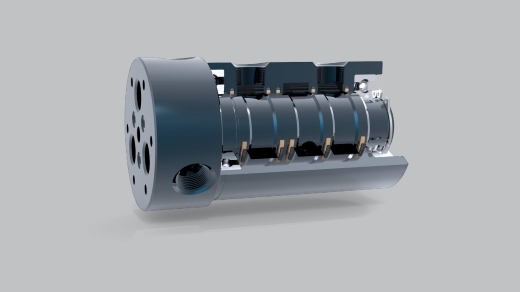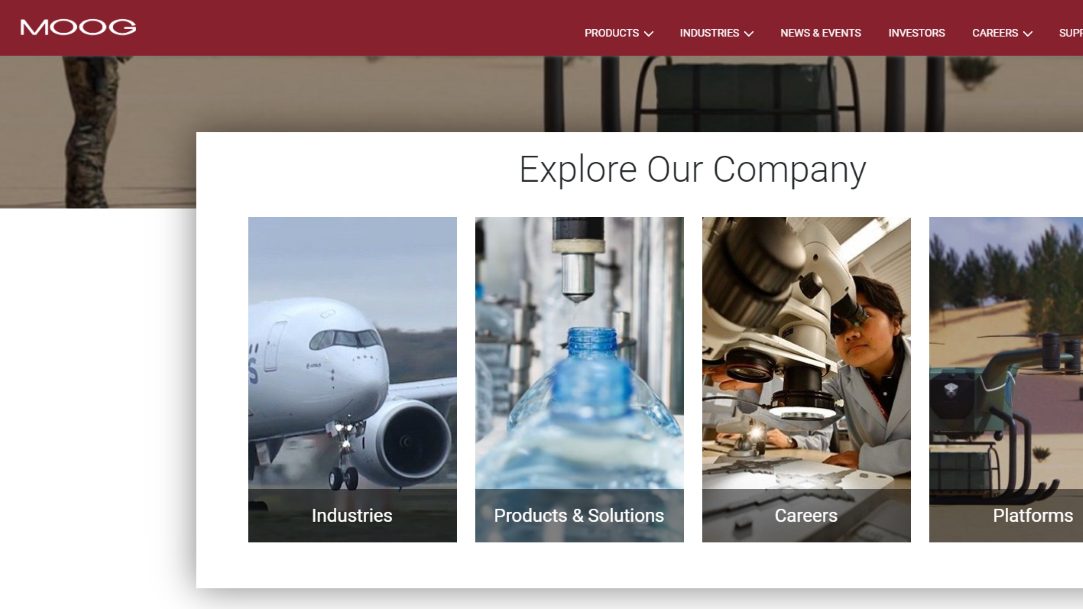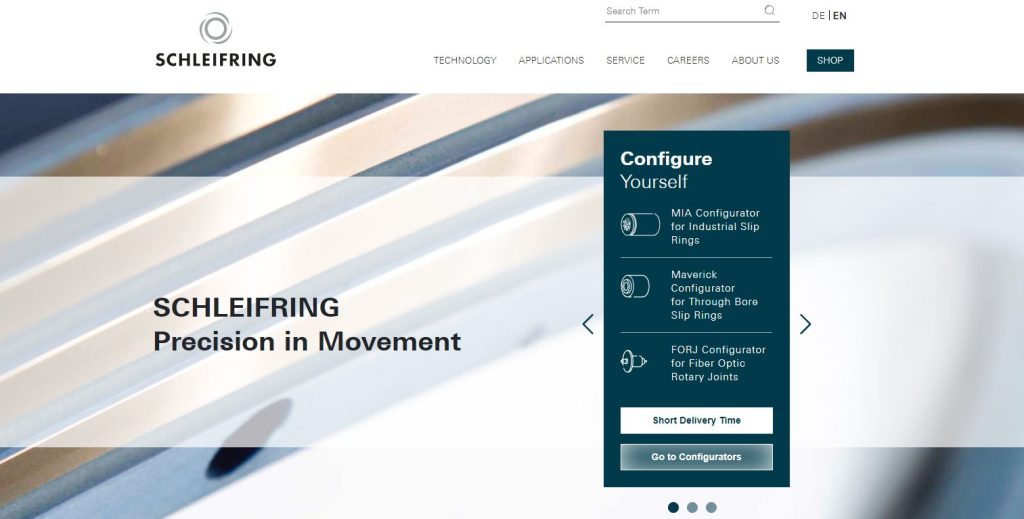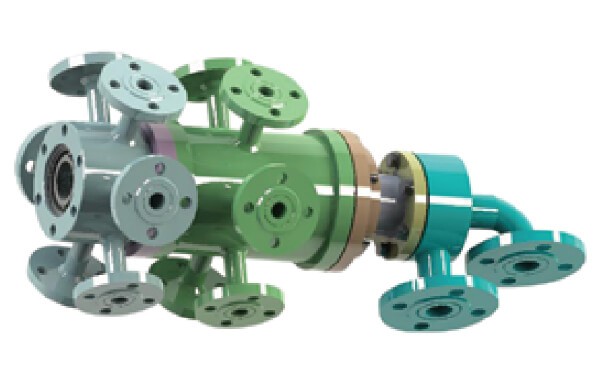In this article, we cover a comprehensive overview of rotary couplings, delving into their various aspects, applications, challenges, and prospects. Learn all about their working principles, selection, maintenance, and innovations that can help make informed choices in your engineering or professional projects.
Introduction to Rotary Coupling
Understanding Rotary Couplings
Rotary coupling, often referred to as a rotary joint or a swivel joint, is a critical component in various mechanical systems. These devices serve to transfer fluid—such as water, steam, air, or hydraulic fluid—or power between stationary and rotating parts of a system. Their operation relies on creating a secure seal that ensures a continuous and leak-free transfer of the required medium, regardless of the constant motion involved.
These couplings come in diverse designs and sizes, catering to an array of applications. They are used in multiple sectors including the automotive industry, manufactural assembly lines, oil and gas, food and beverage processing, among others. Each field uses a specifically designed rotary coupling tailored to meet the unique requirements of the application, ranging from high-temperature and high-pressure systems to those where precision and minute tolerances are critical.
Significance of Rotary Couplings in Mechanical Systems
The role of rotary couplings in mechanical systems is of paramount importance. Often, they’re the backbone of operations central to the efficacy of entire systems. Without these vital components, the transfer of fluid or power between rotating parts and the rest of the system would be impractical, if not impossible, especially in systems designed to operate under continuous or near-continuous rotation.
In addition, rotary couplings facilitate the smooth, efficient operation of these systems. By maintaining a constant, unbroken connection between the rotating sections and permanent parts of a machine, they ensure that systems can operate as intended without loss of fluid or power, thus improving system performance. Rotary couplings also contribute to the longevity of these systems by reducing wear and tear due to their role in managing friction.
Furthermore, these couplings are essential for maintaining safety standards as they prevent potential hazards such as fluid leakage—especially crucial in systems handling dangerous fluids—for both human operators and the environment. They embody the intersection of function, performance, and safety in mechanical systems, thus underlining their intrinsic need and importance.
In conclusion, an understanding of rotary coupling and its significance in mechanical systems serves as a linchpin in many industries and applications. Whether it is maintaining efficiency, prolonging the life of machinery, preventing leakage, or ensuring safety, the role of rotary coupling is undeniable. Thus, it is crucial for users and operators to carefully select and maintain these vital components to ensure optimal system operation and longevity. Understanding rotary couplings is an important step in improving system design, operation, maintenance, and safety.

Working Principle of Rotary Couplings
An In-depth Look into Rotary Coupling Operation
The working principle of a rotary coupling is rooted in its basic functionality: to provide a continual, secure, and leak-free transfer of fluid or power between stationary and rotating parts of a system. How this is achieved is a marvel of mechanical design and engineering.
Consider a system that involves a rotating shaft that needs to be in a constant, leak-proof connection with a stationary part for fluid or power transfer. This is the scenario where a rotary coupling, specifically designed for the task, comes into play. The rotary coupling typically consists of two main parts: a housing (stator), which remains stationary and is generally attached to the stationary part of the system, and an inner part (rotor), which is connected to the rotating shaft.
The fluid or power enters the rotary coupling via the housing and is then transferred to the rotor. The unique design of the rotary coupling ensures this medium is transferred continuously, even as one part rotates while the other stays fixed. The key to this uninterrupted transfer is the high-performance seal maintained between the stationary and rotating parts.
This seal is crucial in preventing fluid or power leakage and is often made from high-performance materials that can withstand the conditions of operation (e.g., pressure, temperature, speed of rotation). Additionally, apart from this sealing ability, the system design also incorporates bearings that support the rotating part, absorbing forces and reducing friction, thus ensuring the smooth operation of the rotary coupling and the system as a whole.
Visualizing the Operation of Rotary Couplings
To help visualize how a rotary coupling operates, imagine a garden hose attached to a spinning sprinkler. In this scenario, the issue of spinning the sprinkler while maintaining water flow from the hose is a simple comparison to the problem addressed by the rotary coupling in complex mechanical systems. The hose can be likened to the stationary part (or housing) while the sprinkler corresponds to the rotating part (or rotor).
In an ideal situation for the sprinkler to function effectively, the hose needs to remain static while the sprinkler spins—the exact function provided by a rotary coupling in a mechanical system. Various engineering designs and principles have been applied to achieve this operation, leading to different types of rotary couplings suited to their unique applications.
Although this article lacks illustrations, numerous schematic diagrams and 3D animations online can provide a graphic depiction of the working principle of rotary couplings. These resources offer an even deeper understanding of this key mechanical component, making the inherent complexities of its operation more comprehensible.
In summary, the operation of a rotary coupling is an intricate balance of multiple mechanical concepts. Armed with knowledge of these principles, the complex tasks performed by these seemingly simple components can be understood and appreciated. This understanding is fundamental in any discussion related to rotary couplings, whether it is about their operation, selection, maintenance, troubleshooting, or even innovation for future designs.
Types of Rotary Couplings
Understanding Different Classes of Rotary Couplings
Rotary couplings, due to their varied applications in different systems, come in various types, each fulfilling specialized requirements of the system they are a part of. While there is a broad spectrum of rotary couplings based on specific applications or system requirements, they can be categorized into two main types: Hydraulic Rotary Couplings and Pneumatic Rotary Couplings based on the medium they transfer.
Hydraulic Rotary Couplings
Hydraulic rotary couplings are designed for the transmission of hydraulic fluids. These types of couplings are typically made to withstand high-pressure environments, given the nature of hydraulic systems. That’s why you’ll often find them made from robust materials, such as stainless steel, that offer durability and resist corrosion.
Hydraulic rotary couplings are characterized by their capacity to function under high pressures, sometimes as much as several thousand PSI (Pounds Per Square Inch). Some are also designed to accommodate high-temperature operations, especially those applied in heavy-duty industrial settings.
Suitable applications for hydraulic rotary couplings include heavy machinery in sectors like construction, mining, and manufacturing. They are also in hydraulic actuation systems and numerous other industrial machinery where hydraulic fluid transfer is required during continuous or partial rotation.
Pneumatic Rotary Couplings
Pneumatic rotary couplings are another major category, facilitating the transfer of compressed air or other gases. These couplings are engineered to maintain a tight seal, preventing any gas leakage during rotation.
Materials used in pneumatic rotary couplings vary, including metals and high-grade plastics, with choices based on the application’s specifics. Unlike hydraulic rotary couplings, these are designed to work at comparatively lower pressures but often at higher rotational speeds.
The advantages of pneumatic rotary couplings, including their lighter weight and faster response times, make them well-suited for certain applications such as automation equipment and robotic systems. They’re also widely used in sectors like food and beverage processing and pharmaceutical manufacturing.
To sum it up, both hydraulic and pneumatic rotary couplings have their distinctive characteristics, functionality, and relevant applications. When selecting a rotary coupling, it’s essential to consider the specific requirements of the system, such as operating pressure, temperature, speed, space constraints, compatibility with the fluid or power being transferred, and more. Ensuring that the right rotary coupling is installed will lead to a more efficient, reliable, and cost-effective system.
Key Considerations While Selecting a Rotary Coupling
Factors to Consider When Choosing a Rotary Coupling
Selecting a rotary coupling for a specific application is a critical task where multiple factors have to be considered. The right choice of rotary coupling can significantly influence a system’s performance and its long-term sustainability. Below are some key factors that need to be taken into account:
- Size: Depending upon the requirements of the system, rotary couplings are available in various sizes. Choosing an adequately sized rotary coupling is crucial for correct fitting and optimal functioning. A sizing error might lead to improper fitting, leakage, or performance deterioration.
- Operating Speed: The rotational speed of the system is another vital factor. Different rotary couplings are designed to operate optimally at different speeds. Therefore, it’s important that the coupling selected can accommodate the system’s rotational speed without any performance issues or premature wear and tear.
- Torque Capacity: In systems that involve power transmission, the torque capacity of the rotary coupling must be considered. The torque capacity should be appropriately chosen to handle the system’s load without causing any mechanical failures.
- Operating Pressure & Temperature: Depending on whether the rotary coupling is hydraulic or pneumatic, it should be able to handle the particular pressure at which the system operates. Similarly, the coupling should also be compatible with the temperature range of the working environment, and of the fluid being transmitted, to prevent seal damage or failure.
- Seal Material: Different seal materials are compatible with different types of fluids. Therefore, the seal should be selected carefully to prevent corrosion, ensure durability, and maintain a leak-proof transfer.
- Lubrication Requirement: Some rotary couplings require periodic lubrication to reduce friction and wear, while others have a self-lubricating design. Users need to choose based on their ability to provide regular maintenance and the system’s specific needs.
- Environment & Application: The environmental conditions where the system operates can have an impact on the rotary coupling’s performance. Corrosive environments, for instance, demand couplings made from corrosion-resistant materials. The unique requisites of the application, such as food-grade requirements in the food and beverage industry or high-pressure requirements in oil and gas, also determine the precise rotary coupling needed.
Evaluating Compatibility
Above all, assessing the compatibility of the rotary coupling with the system/application forms the crux of selection. Each specific unit or system will have a unique set of requirements, and it is crucial to consider all these to choose the most suitable rotary coupling. When chosen correctly, a rotary coupling will enhance system performance, extend the lifecycle of the components, reduce maintenance downtime, and add value to the operation.
In conclusion, choosing an appropriate rotary coupling may pose a challenge owing to the range of factors involved. Therefore, it’s important to approach this task with a thorough understanding of the system’s specifications and requirements or to consult with a specialist or manufacturer who can provide guidance based on their extensive knowledge and expertise.
Rotary Coupling Prominent Manufacturers and Product Comparison
Top manufacturers of rotary couplings include:
Some prominent manufacturers in the helicopter slip rings market include:
| No. | Manufacturer | Website |
|---|---|---|
| 1 | Hangzhou Grand Technology | https://www.grandslipring.com/ |
| 2 | Moog Inc. | https://www.moog.com/ |
| 3 | Stemmann-Technik | https://www.stemmann.com/en/home |
| 4 | Schleifring | https://www.schleifring.com/ |
Hangzhou Grand Technology

Hangzhou Grand Technology Co., Ltd. started as a special slip ring manufacturer in 2011. Grown into slip rings, rotary joints, and slip ring assembly experts of today with 6,000 square meter manufacture complex.
Obtained ISO9001, Rosh, CE, and GJB9001B certificates a number of slip rings, rotary joint patents, and proud of our products can meet military grade. Collaborated with universities, institutes, and renowned factories across Asia and Europe including Panasonic, SIEMENS, CSIC, SAMSUNG, HUAWEI, etc.
Moog Inc.

Moog is a leading supplier of high-performance slip rings for various industries, including aerospace. Among their offerings, Moog’s SR Series Slip Rings are designed for the demanding environments of helicopters, excelling in performance, reliability, and customization potential.
Stemmann-Technik

Stemmann-Technik, a part of the Conductix-Wampfler Group, offers a broad range of slip rings, including solutions for helicopters. Their Livietta Slip Ring Assemblies are designed explicitly for harsh and demanding environments in the aviation sector, providing reliable signal and power transmission.
Schleifring

Schleifring is a well-known manufacturer of electromechanical systems, including slip rings customized for various industries. Their Aircraft Slip Rings cater specifically to helicopters, offering robust performance, low wear, and high reliability to meet the challenges of aviation applications.
If you want to know more about other slip ring manufacturers, you can read Top 10 Slip Ring Manufacturers in China, Top 10 Slip Ring Manufacturers In the USA Market 2023, and Top 10 Slip Ring Industry Key Manufacturers 2023.
Rotary Coupling Application Examples
The application of rotary couplings extends across numerous industries due to their versatility and reliable functionality. Listed below are some real-life examples illustrating how rotary couplings are employed in different systems or machines dramatically enhancing operational efficiency.
Packaging Machinery
In packaging machinery, rotary couplings are used in multiple stages from filling to sealing. They facilitate the transmission of compressed air in pneumatic systems or oil in hydraulic-powered parts, providing smooth, continuous operation. For instance, in a bottle-filling machine, a pneumatic rotary coupling may be used to operate pistons continuously to fill the bottles accurately and swiftly. This ensures high-speed production, ultimately contributing to improved operational efficiency and productivity.
Printing and Paper Processing Machines
In the print and paper industry, rotary couplings play an essential role in continuous printing operations. They facilitate the transmission of inks and coolants in the printing cylinders maintaining a consistent operational speed. With high-speed rotary couplings, printing machines can work for extended periods without overheating, providing uniform quality prints, and reducing the potential for printing errors in great detail.
Wind Turbines
Rotary couplings find a critical application in the wind energy sector, specifically within wind turbines. They allow fluid transfer for hydraulic pitch control systems while the blades are rotating. Their use ensures a constant, efficient energy generation process, minimizing downtime and maximizing the turbine’s performance.

Automated Industrial Machinery
Automated machinery heavily depends on rotary couplings. Whether it be robotic arms in assembly lines or automation in food and beverage processing plants, rotary couplings are essential components. They allow uninterrupted power or fluid transmission into the rotating parts, maintaining high-speed, precise movements, crucial for efficient and consistent production in automated systems.

To sum it up, rotary couplings are integral components in numerous industrial applications, bringing about a seamless, efficient operation by ensuring smooth power or fluid transfer. Moreover, they significantly reduce wear and tear on other machine components, resulting in decreased downtime, reduced maintenance costs, and extended equipment lifespan. By understanding the role and importance of rotary couplings, industries can leverage these components’ benefits, which ultimately contribute to enhanced productivity and cost-effectiveness.
Rotary Coupling Common Issues and Maintenance Tips
Like any mechanical component, rotary couplings may encounter certain issues or challenges during their service life. Proper understanding of these issues and routine maintenance can significantly help prolong the life expectancy of these components.
Common Rotary Coupling Issues
- Leakage: One of the common issues with rotary couplings is fluid or gas leakage. This can be a result of worn-out seals, incorrect seal material, excessive operating pressure or temperature, or even improper installation.
- Wear and Tear: Over time and extensive use, the rotary couplings may experience natural wear and tear, especially in high-speed or high-load applications. This can lead to performance degradation and ultimately, failure of the coupling.
- Corrosion: In environments where corrosive fluids are involved or where the atmospheric conditions are corrosive, couplings can experience material degradation leading to corrosion. This corrosion, if left unchecked, can lead to catastrophic failure of the coupling.
- Vibration and Noise: Another common issue is excessive vibration or noise during operation, usually resulting from misalignment, imbalance, improper installation, or material failure.
Maintenance Tips for Rotary Couplings
- Regular Inspection: Performing regular visual and physical inspections of the coupling can help identify issues like leakage, worn-out parts, or corrosion at an early stage. This early detection can prevent more severe issues and expensive repairs down the line.
- Proper Lubrication: Depending on the type of rotary coupling, it may require regular lubrication to reduce friction and prevent wear and tear. Keep a check on the manufacturer’s lubrication guidelines.
- Alignment Checks: Regular alignment checks not only help prevent vibration and noise but also reduce stress on the moving parts, leading to a longer life of the rotary coupling.
- Seal Replacement: The seals in a rotary coupling bear the brunt of the work and hence wear out over time. Routine examination and timely replacement of seals can prevent leaks and potential damage to other components.
- Temperature and Pressure Monitoring: Keeping a regular monitor on the operating temperature and pressure can help detect abnormal conditions that may lead to coupling failures.
- Follow Manufacturer’s Maintenance Schedule: Each manufacturer provides an ideal maintenance schedule tailored to their coupling. Adhering to it can help keep the coupling in optimal condition and prolong its life.
In summary, a robust understanding of the common issues linked with rotary couplings and regular preventive maintenance are keys to ensuring the longevity and reliability of these essential components. Timely detection of problems and their rectification can reduce operational downtime, save on repair/replacement costs, and most importantly, enhance the performance efficiency of the machinery they are used in.
Future Trends and Innovations in Rotary Couplings
As modern engineering systems evolve and are subject to increasing demands, the rotary coupling industry stands at the forefront of meeting these requirements. Manufacturers are consistently pursuing the latest advancements and trends to enhance the functionality and efficiency of rotary couplings used in various applications. Some of these future trends and innovations are as follows:
Material Innovations
The materials used in manufacturing rotary couplings play a significant role in their overall performance and durability. Researchers and manufacturers continuously explore new materials, particularly for component seals, that exhibit improved wear resistance, and temperature stability, and can handle a wider array of fluid types. Progress in material science may pave the way for more versatile and long-lasting rotary couplings.
Smart Monitoring and Diagnostics
Integration of smart sensors and IoT technology into rotary couplings has the potential to transform their maintenance and monitoring. These innovations would enable continuous tracking of operating parameters such as temperature, pressure, vibrations, and wear, facilitating proactive maintenance practices. Predictive analytics can be employed to anticipate potential failures, optimize performance, and even automate component replacement decisions, ultimately leading to reduced downtime and increased reliability.
Compact and Lightweight Designs
As industries strive for increased efficiency and precision, there’s a growing demand for compact and lightweight rotary couplings. Newer designs that reduce weight, minimize space requirements, and maintain optimal performance will be desirable, especially in applications where size constraints and movement efficiency are crucial, such as robotics and aerospace.
Energy-efficient and Environmentally-friendly Solutions
As industries shift towards sustainability and energy efficiency, rotary couplings must adapt accordingly. Future innovations will likely focus on minimizing energy consumption, effectively reducing leaks, and being compatible with environmentally friendly fluids or gases.
Customization and Modularity
Increased customization and modularity in rotary coupling design will provide greater flexibility for users, accommodating specific application requirements and offering easy adaptability for system upgrades. Manufacturers might lean towards offering custom-designed solutions tailored to a particular application, ensuring optimal performance and compatibility.
In conclusion, the future of rotary couplings lies in the pursuit of constant advancements and adaptability to the ever-changing engineering landscape. The integration of new materials, smart technologies, compact designs, and energy-efficient solutions will set the course for rotary couplings that boast increased reliability, efficiency, and sustainability to meet the growing needs of diverse industries.
Conclusion
Understanding the intricacies of rotary couplings, their working principles, types, applications, challenges, and prospects is crucial for making informed choices in professional or engineering projects. By knowing what to consider when selecting and maintaining rotary couplings, and staying aware of emerging trends, you can optimize system performance, increase efficiency, and create successful outcomes in your projects.


